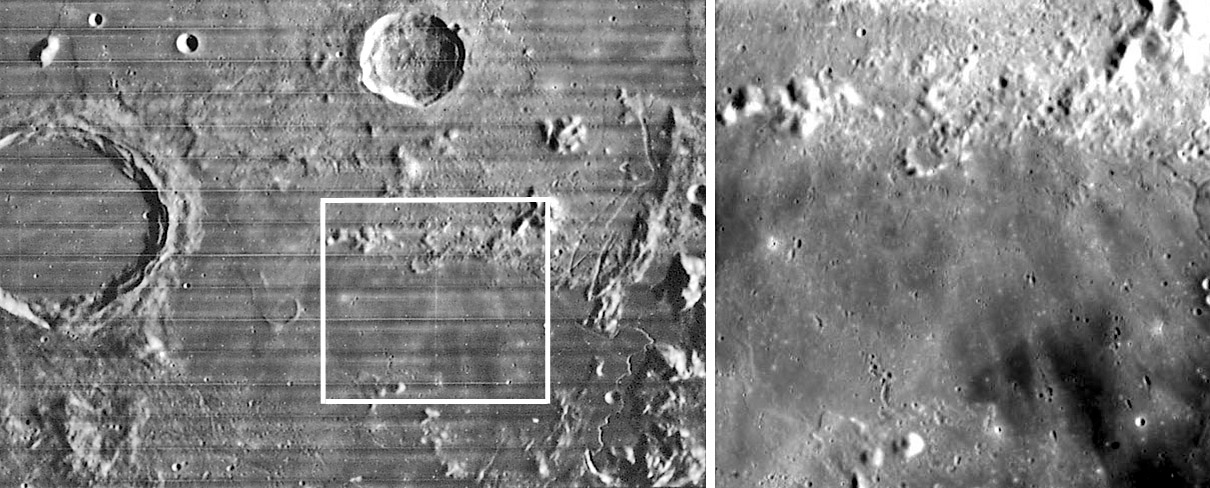
right image by European Space Agency (ESA) and left from Lunar Orbiter IV
ESA has released another set of images from the SMART-1 spacecraft that has been orbiting the Moon since November, 2004. The release juxtaposed two images - one a closeup of a cratered swath of the farside and the other a small piece of a nearside mare area. I didn’t recognize where the mare image was and so used the published coordinates and a Lunar Orbiter IV image to place it in a rather nondescript area of Palus Putredinis. The ESA caption used the highland and mare images to point out that one terrain was rougher and more highly cratered - a fundamental observation originally made by Galileo. It is strange that ESA used this particular mare image for it is an atypical mare surface. Only small patches of dark mare are visible, the rest is veneered by ejecta from nearby Autolycus (center top in the Lunar Orbiter image). Small irregular lines of secondary craters are common, especially along some of the ray segments. A few small dark halo impact craters have brought up the dark mare from below the veneer. A pretty ho-hum place - more exciting images are needed!
Technical Details:
10 January, 2006. Advanced Moon Imaging Experiment camera; resolution 180 m/pixel.
Related Links:
Rükl chart 22
Yesterday's LPOD: L98
Tomorrow's LPOD: Eclipse Glow
Yesterday, 1.8% of LPOD readers clicked on an ad, down 0.8 from the day before - Thanks!
COMMENTS?
Register, Log in, and join in the comments.



